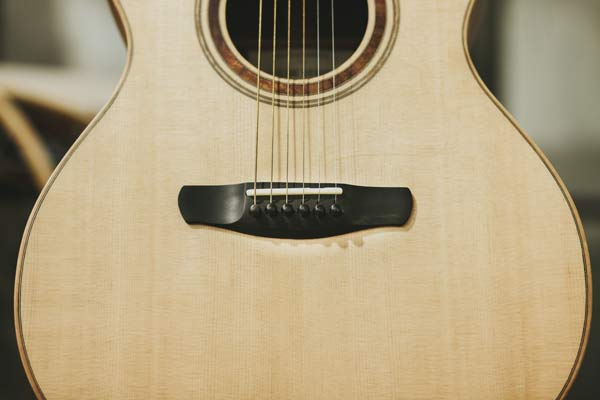Models & Materials
For the past 32 years I have focused much of my attention on steel string guitars, though I have dabbled in archtop and classical as well, but my first love has always been the steel strings. For many years I was designing and selling and managing the DuncanAfrica project, but I always wanted to return to making dust – to shaping wood with my hands and tuning tops with my ears – so in many ways I am returning to my roots while the DuncanAfrica project needs me less than it did in the beginning.
Here then, are the models I will be offering, though each one can and will be altered to suit individual clients and dealers.

Models

The Selah
A finger-style dream, the Selah is an OM with an enlarged upper bout which lets the top breathe better, giving us stronger overtones and harmonics. It works well with a variety of woods depending on the players preferences.

The Jubilee
How does one model suit both the strummer and the Bluegrass picker so well? Only a dreadnought can pull off that trick!

The Pearl
This is my smallest offering, but it comes with quite a loud, full and open voice. Perfect for the couch and songwriting, it is a 12 fret OO with the body shape derived from a 29’ Gibson I once bought from an Elvis impersonator.

Barncasters / Electric Guitars
These are a breath of fresh air for me – an electric guitar is so very different than building a fragile acoustic or archtop guitar – so there are no rules when it comes to the body – it can look and feel like a piece of weathered fencing, or have bark on it, barely any lacquer, you could drag it behind my old truck for that effect if you wanted – but the neck and hardware will always be top notch, and the set up will be just right – like hanging out on stage with an old friend. These are pure, unadulterated fun.
My Favorite Woods for Guitar Tops

Sitka Spruce
From the beautiful Haida Gwaii Islands of British Columbia, Sitka excels as a top wood for its strength and unparalleled volume. Its wide dynamic range and reliable singing tone makes it our standard top.

Western Red Cedar
With a muted and already-aged appearance, western red cedar works well with a rosewood fingerboard to produce clear bass and sparkling treble for finger-style playing.
My Favorite Woods for Guitar Bodies

Mugavu
Sourced near DuncanAfrica’s trade school in Mpigi, Uganda, Mugavu is a golden and luminous wood with a dry, mid-focused, resonation supporting a complex array of overtones.

Mahogany
Dependable and stable in all climates, mahogany holds tune and intonation well, and for that reason is used for necks as well as back and sides. Mahogany is typically dark (though sometimes almost salmon) in its appearance, and also has a “dark” resonance with great clarity and bass and mid-range enunciation.

East Indian Rosewood
From India, this is one of the most dependable tone woods available. Ranging in color from tan brown to deep red to dark purple, this oily wood is the standard for the back and sides for most high end manufacturers. It consistently turns out instruments with rich and layered bass and treble.

Western Flamed Maple
An astounding tone, mellow but full of complex overtones and a bottom end that leaves you wondering why we haven’t seen more guitars built with this wood. Softer and more beautiful than its eastern “hard rock” counterpart, western flamed maple has a mellow and “aged” sound right from the start.
